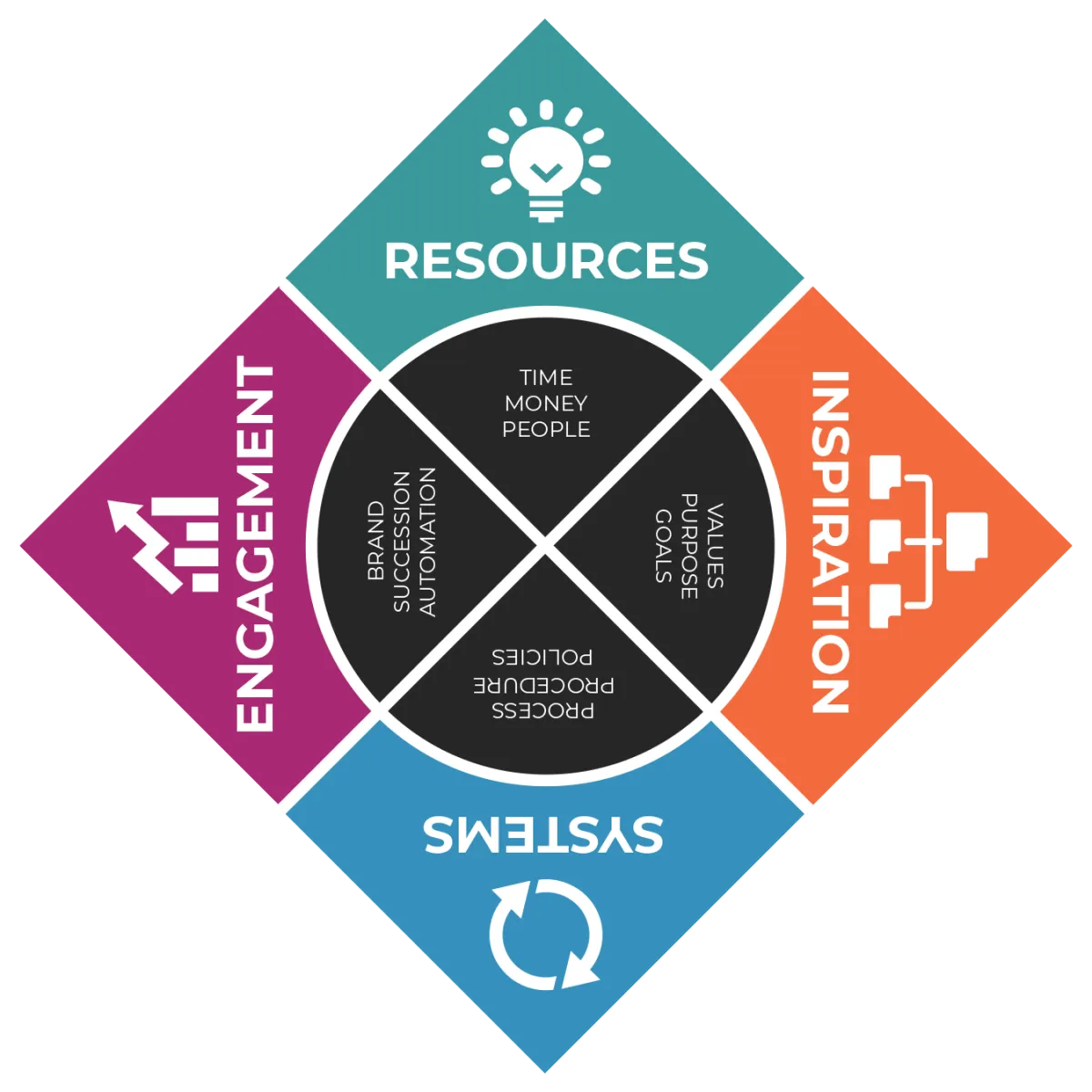
Setting a Long-Term Vision for Your Business – Creating a Roadmap for Success
Why a Long-Term Vision is Critical for Business Growth
Many business owners get caught up in day-to-day operations, focusing only on short-term goals like increasing revenue or cutting costs. But without a clear long-term vision, businesses often:
❌ Struggle with inconsistent growth
❌ React to problems instead of planning proactively
❌ Lose employees who don’t see a clear future within the company
The RISE Business Framework teaches that a strong vision provides direction, inspires teams, and ensures sustained success.
If you’re making business decisions based on what’s happening today, rather than where you want to be in 5–10 years, it’s time to build a long-term roadmap for success.
What is a Long-Term Business Vision?
A long-term vision is the big-picture goal that defines where your business is headed over the next 5, 10, or even 20 years.
A clear vision:
✔ Aligns teams and leaders on common goals
✔ Informs strategic decisions for growth and innovation
✔ Keeps employees motivated by showing them a future they can be part of
📌 Example: Instead of setting a short-term goal like “Increase revenue by 20% this year,” a long-term vision could be “Become the leading provider of sustainable home solutions in North America by 2035.”
Why Businesses Struggle Without a Long-Term Vision
Many businesses fail to set a vision because they:
🚫 Focus only on immediate challenges and financial goals
🚫 Haven’t defined their “why” or long-term impact
🚫 Don’t communicate a clear direction to employees
Without a long-term vision, businesses experience:
❌ Short-term thinking that limits growth
❌ Lack of employee engagement and motivation
❌ Difficulty making decisions aligned with future goals
Without a clear destination, businesses drift instead of growing strategically.
How to Create a Long-Term Vision for Your Business
The RISE Business Framework provides a structured approach to defining and executing a long-term vision.
Step 1: Define Your Big-Picture Goals
✔ Ask: Where do you want your company to be in 10 years?
✔ Think beyond revenue—what impact do you want to make?
📌 Example: Instead of just “grow profits,” a company might aim to expand into global markets, develop industry-leading technology, or become a top employer in their field.
Step 2: Align Your Vision with Core Values
✔ Your vision should reflect your company’s mission and values.
✔ If your company values innovation, your vision should include future product advancements.
📌 Example: A tech company with a core value of "simplicity" might set a vision to "revolutionize user-friendly software for small businesses worldwide."
Step 3: Create a Roadmap with Milestones
✔ Break your long-term vision into 3- to 5-year goals.
✔ Set key milestones that track progress toward your vision.
📌 Example: If your vision is to expand nationwide in 10 years, your 5-year milestone might be opening regional offices in three major markets.
Step 4: Communicate & Reinforce the Vision
✔ Share your vision with employees at every level.
✔ Ensure leaders make decisions based on the long-term vision.
📌 Example: A company that values sustainability should reinforce this in product design, supply chain choices, and branding.
Frequently Asked Questions (FAQs)
FAQs About Long-Term Business Vision
1. Why is a long-term vision important for business success?
A clear vision guides decision-making, aligns teams, and ensures sustained growth. Without it, businesses react instead of planning strategically.
2. How often should a business update its vision?
✔ Review your vision every 3–5 years to ensure it’s still relevant.
✔ Adjust for market changes, innovation, and company growth.
3. How do I ensure my team stays aligned with the long-term vision?
✔ Communicate the vision regularly in meetings and company updates.
✔ Use performance metrics and goals that tie back to the vision.
FAQs About the RISE Business Framework
1. How does RISE help businesses create long-term vision?
RISE provides vision-setting frameworks, leadership alignment tools, and strategic planning systems.
2. Can small businesses benefit from a long-term vision?
Yes! Small businesses need clear direction even more, as their early decisions have long-term impact.
3. How do I start implementing a long-term vision?
Final Thoughts
A long-term vision is the foundation of a successful business.
By setting clear goals, aligning leadership, and creating a roadmap, you can ensure your business grows with purpose, direction, and long-term impact.
🚀 Want to build a future-proof business? Start defining your long-term vision today!
